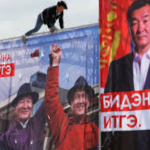A new documentary titled “The Boy and the Suit of Lights” has premiered at the Sheffield Documentary Festival, showcasing the journey of a young boy, Borja, from a small town in Castellón, Spain, whose family hopes he will become a professional bullfighter.
This career path, seen by many today as controversial due to the ethical concerns surrounding bullfighting, still holds significant cultural importance in certain parts of Spain, including Castellón.
The documentary explores the relationship between Borja and his grandfather, Matias, who is a staunch supporter of the tradition and encourages his grandson to embrace bullfighting despite the growing opposition to the sport.
The film provides an intimate look at Borja’s life and the cultural and familial pressures he faces in pursuing a profession that many now view as cruel and outdated.
Director Inma De Reyes, who hails from Castellón, offers a unique perspective, having grown up in a town deeply entrenched in bullfighting culture. Although she was familiar with bullfighting through its presence in her hometown and on television, she was unaware that Castellón is considered Spain’s bullfighting capital until much later.
Her documentary sheds light on the persistence of this tradition in certain Spanish communities and the generational divide in attitudes towards the sport.
“It’s a small city where time hasn’t passed, people have very traditional jobs, they work in fishing, the orange fields, or bullfighting, and every so often there would be a traditional celebration which is religious.
“So I see my hometown as where nothing ever changes. That’s why I left, I didn’t fit in there, I wanted to explore the world and find out who I was outside of that place.
“And by coming back and making a film there, that’s how I started to look more in depth at how families are putting values onto children and the children’s personalities are being shaped.”
When de Reyes began looking into the subject for a documentary, her mother sent her local newspaper articles highlighting the bullfighting traditions, and the film-maker was opened up to a world she “hadn’t taken an interest” in previously.
“My granddad owned books and posters about bullfighting, but I did think that was generations ago,” de Reyes recalls. “I didn’t know how big the culture was.”
A friend of the Spanish director, who is now based in Edinburgh, connected her to a bullfighting school, through which she ultimately met Borja.
The practice sees the bullfighter, usually in bright and decorated clothing, attempt to subdue, immobilise, or kill a bull, in a ring in front of a live audience.
It’s clear from the film that Matias harbours his own unfulfilled dreams of becoming a professional bullfighter, and pins his ambitions on his grandson succeeding where he failed, partly in the hope it might help lift the family out of poverty.
Coming from underprivileged background, Borja feels limited by a life with seemingly little opportunity, and goes along with his family’s wishes to begin with.
Producer Aimara Reques says becoming a bullfighter is “a romantic idea”, adding: “That’s what Borja is holding on to.”
“Everybody sees the bullfighter as a figure with status, you don’t think of the killing. As a child, he’s fantasising just as the family does. ‘Oh, wow, he’s going to be standing up there’.
“It’s a theatrical event, it’s quite camp in a sense, you dress up, the mothers are so proud. But then you have to kill the bull, that’s the biggest paradox.”
An industry in ‘decay’
Filmed over five years, The Boy and the Suit of Lights doesn’t shy away from the controversy surrounding bullfighting.
Borja watches as protestors storm the ring during one fight with banners which say “No violence.”
However, for a film with bullfighting at its centre – it contains noticeably little bullfighting footage. Instead, it’s the backdrop of a subtle coming-of-age story about adolescence, family and poverty.
“We knew that the film couldn’t have bullfighting at the front,” says de Reyes. “Borja’s coming-of-age story had to be front and centre, and also to make the film watchable.
“You can watch bullfighting on YouTube, I was not interested in capturing any more of that. It’s more about forming a personality as a child.”
On a practical level, there also wasn’t a huge number of bullfights taking place – only two took place as the documentary was shooting.
De Reyes, who is now based in Edinburgh, describes Borja’s personality as “gentle and caring” – a temprement possibly unsuited to the bullfighting world.
“At the beginning, I was very impressed by Borja’s dedication and he was so diligent about his duty. He was almost like, ‘this is what I’ve been told to do and this is what I’m going to do’. I thought he was an amazing child,” says de Reyes.
“And as time goes by, I hope you can see in the film how his mind doesn’t fully engage with the commitment of killing a bull. And I also felt that as a director, that Borja wasn’t made for this, and he kind of knew it.”
The film includes footage of Borja and his brother rehearsing using replica bulls’ heads mounted on wheeled frames, with their grandfather looking on.
It also follows Borja in other settings – spending time with his friends and getting a traditional bullfighter’s costume fitted.
However, the challenge of putting Borja’s own story front and centre was that, like many boys his age, he wasn’t always prone to sharing his feelings.
“Making the film, I was trying to capture what Borja was thinking without him saying it,” says de Reyes, “because I don’t feel like he would ever say to anybody that he wasn’t going to do this – but you could tell.
“So trying to capture that in cinema, saying he’s starting to have these thoughts, without any voiceovers or interviews, was really hard.”
She credits her cinematographer with capturing Borja’s emotions via facial expressions and body language. “You start to realise he’s got a lot going on, just by looking at him.”
“The Boy and the Suit of Lights” documentary sheds light on the cultural significance and complexities surrounding bullfighting in certain regions of Spain, despite the growing opposition to the practice globally.
While bullfighting remains legal in Spain and other countries like Portugal, Southern France, Mexico, Ecuador, Venezuela, and Peru, it has faced increasing scrutiny and has been banned or is in the process of being outlawed in many places, including the UK.
Director Inma De Reyes acknowledges that the topic of bullfighting may deter some viewers from watching the film, but she emphasizes that the documentary’s message extends beyond the controversial sport.
Instead, it explores themes of personal freedom and the importance of allowing children to pursue their own paths and interests. De Reyes hopes that the film encourages viewers to withhold judgment and consider the reasons behind people’s choices, even if they may disagree with them.
Producer Reques echoes this sentiment, noting that bullfighting is facing a decline, with many bullfighters struggling to find employment in the industry. Despite efforts to preserve the tradition, its relevance and popularity are diminishing, as reflected in the film.
Ultimately, “The Boy and the Suit of Lights” aims to provoke thought and discussion on cultural traditions, personal aspirations, and societal perceptions. The documentary’s screening at the Sheffield DocFest and its future distribution represent opportunities to engage audiences in dialogue about these complex issues.



